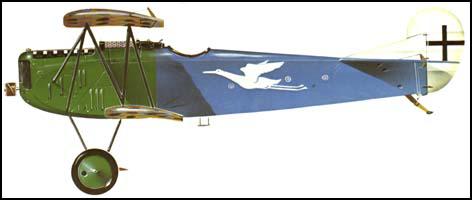Fokker D-VII
The first aircraft developed by Anthony Fokker in the First World War, the Fokker E, helped to establish German superiority over the British and French pilots during the winter of 1915-16. However, by the spring of 1916 this advantage was lost when the Allies began using the Airco DH2 and the Nieuport 17.
In 1917 Anthony Fokker and Reinhold Platz began work on a new aircraft. Making use of the advice given by Manfred von Richthofen, the Fokker Flugzeug-Werke company produced the Fokker D-VII. The first of these planes reached the Western Front in April 1918 and by October there were 800 D-VIIs on active service. The Fokker D-VII was strong, fast and superb at high altitudes and was extremely popular with the German pilots.
The quality of the Fokker D-VII aircraft was acknowledged by the terms of the Versailles Treaty. Article IV stated that all these German planes had to be handed over to the Allies. After the war Anton Fokker moved to Holland and took with him 400 engines and the dismantled parts of 120 aircraft from the Fokker Flugzeug-Werke company. In the 1920s the Fokker D-VII became the mainstay of the Dutch air force.

Performance Data of the Fokker D-VII | |
|---|---|
Type | fighter |
Engine | 160 hp Mercedes |
Wing Span | 29 ft 3 in (8.9 m) |
Length | 22 ft 11 in (7.0 m) |
Height | 9 ft 2 in (2.75 m) |
Maximum Speed | 124 mph (200 kph) |
Maximum Height | 19,685 ft (6,000 m) |
Endurance | 1 hours 30 minutes |
Armament | 2 machine-guns |
